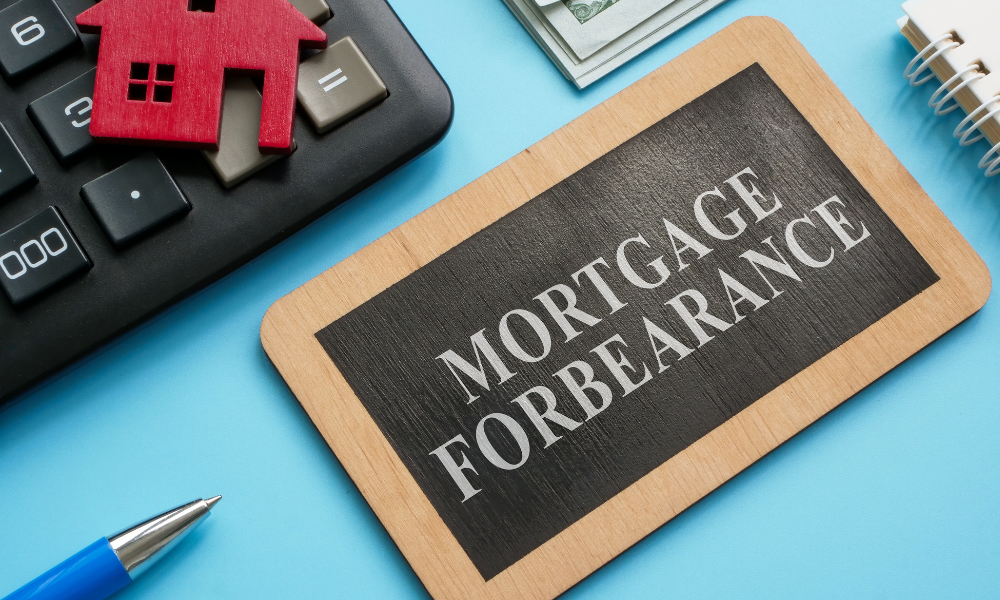Trump to phase out mortgage relief as delinquency risks grow among FHA-backed loans

While overall mortgage performance improved in March, borrowers with Federal Housing Administration (FHA) loans continue to struggle, according to the latest Loan Monitoring Survey from the Mortgage Bankers Association (MBA).
As of March 31, 0.36% of mortgage loans were in forbearance, down from 0.38% in February. That translates to about 180,000 homeowners still in active plans. Since the start of the pandemic, servicers have handled roughly 8.6 million forbearance cases.
“Overall mortgage performance improved in March, with more borrowers making their mortgage payments and fewer borrowers in forbearance and loan workouts compared to the prior month,” said Marina Walsh, vice president of industry analysis at MBA. She linked the improvement to seasonal factors like tax refunds and recovery from natural disasters.
But Walsh also pointed to deeper signs of stress, especially among government-backed borrowers.
“The labor market is relatively healthy, which is helping mortgage performance remain strong,” she said in the report. “However, compared to one year ago, there are fewer borrowers current on their mortgages. Also, more borrowers in loan workouts – particularly those with FHA loans – are having difficulty staying current.”
While forbearance rates declined across the board – Fannie Mae and Freddie Mac loans fell to 0.13%, Ginnie Mae (including FHA/VA) dipped to 0.83%, and portfolio/private-label securities (PLS) dropped to 0.33% – the performance of FHA loans after loan modifications is worsening.
Of all completed workouts since 2020, only 67.83% were current as of March, a modest improvement from February’s 66.36% but still over 7.5 percentage points lower than the same time last year.
The Trump administration has also announced its decision to end FHA’s COVID-era mortgage assistance program by September, an effort originally launched in 2020 and later extended by the Biden administration.
The policy allowed FHA to front payments on behalf of distressed borrowers, but critics now argue that it’s propping up unsustainable loans and delaying the return of needed housing inventory to the market.
Read more: MBA urges FHA to tweak "complex" payment supplement partial claim rule
Of the 52,531 FHA loans that went seriously delinquent in 2024, only nine resulted in foreclosure, an editorial published earlier this year in The Wall Street Journal claimed. The piece called the program a “subprime housing bubble” waiting to burst and warned it was putting taxpayers at risk.
Although the national mortgage delinquency rate remains far below levels seen during the Great Recession, it rose to 3.53% in February, according to data from Intercontinental Exchange (ICE). At the same time, ATTOM Data reported that one in every 1,515 US housing units received a foreclosure filing in Q1 2025.
Delinquencies and defaults are concentrated in specific regions. Washington, Idaho, Alaska, Oregon, and Colorado had the highest shares of current loans in March, while Louisiana, Mississippi, Indiana, West Virginia, and Alabama ranked lowest.
By forbearance reason, most borrowers (76%) cited hardship from job loss, disability, or other personal challenges. Another 21.4% were recovering from natural disasters, and just 2.6% remained in plans specifically tied to COVID-19.
While the share of loans in forbearance declined, most active cases were still in early stages. About 64% of forbearances were initial entries, with 17.6% in extensions, and 18.4% representing re-entries—some of which included extensions as well.
Overall, 95.56% of loans were current in March, up from 95.16% in February but still below the 95.92% reported a year ago. And while the loan workout rate dipped slightly to 6.47%, it remains higher than last year’s 6.11%.
Stay updated with the freshest mortgage news. Get exclusive interviews, breaking news, and industry events in your inbox, and always be the first to know by subscribing to our FREE daily newsletter.



